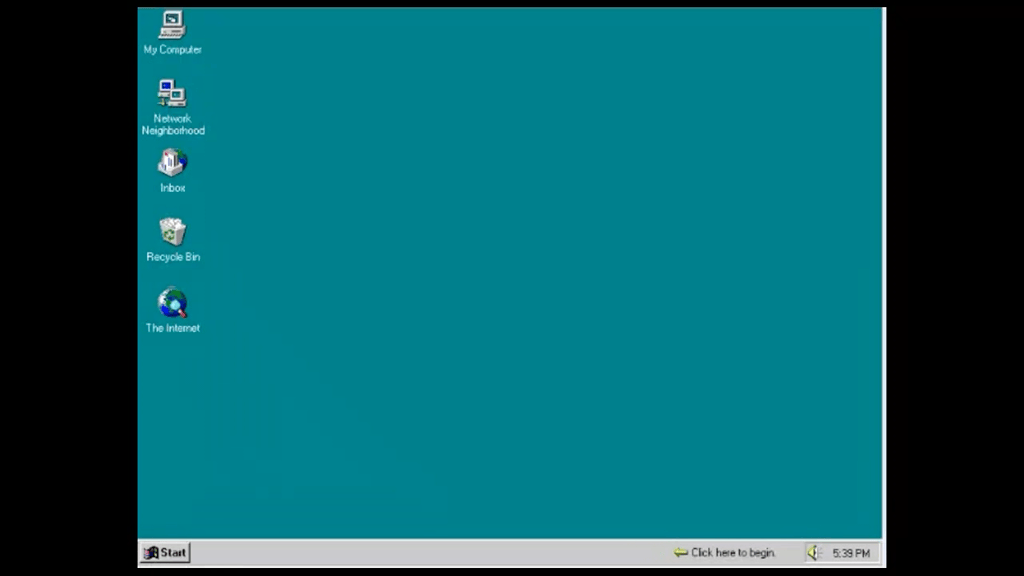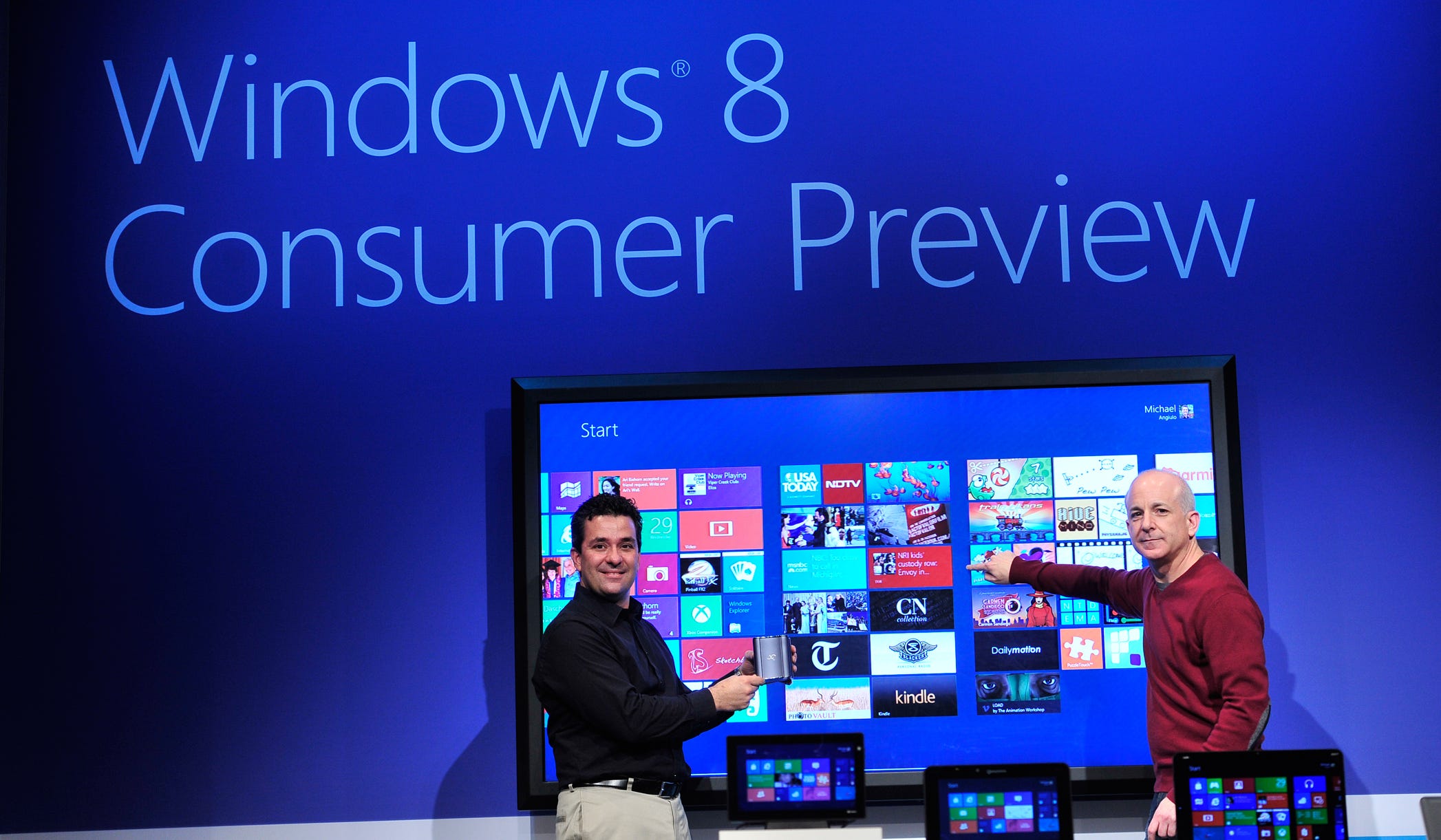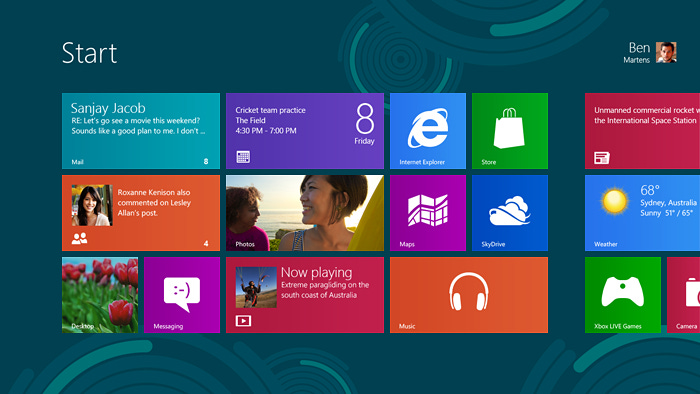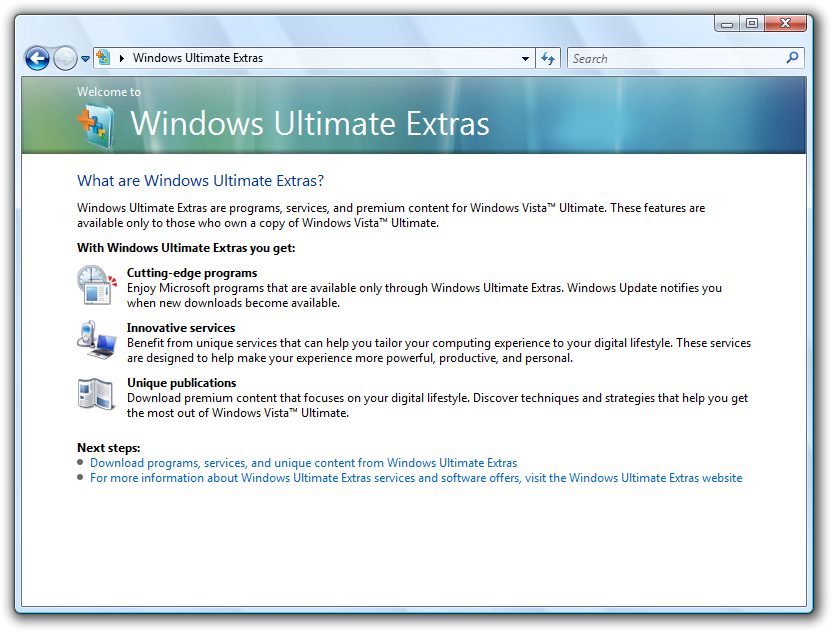096. Ultraseven (Launching Windows 7)
Description
In the era of “boxed” software release to manufacturing was a super special moment. The software is done, and the bits permanently pressed onto a DVD disc. That disc, the golden master, is then shipped off physically to duplicators around the world and then combined with another artifact of the era, a box or in the case of Windows 7 a plastic anti-theft DVD contraption. While Windows 95, the excitement of computing and the newness of internet set a high-water mark for launch events, the completion and launch of Windows 7 was a major worldwide business event. The industry was looking for optimism as we emerged from the Global Financial Crisis and the ensuing slump in PC sales. Windows 7 was just the ticket and the launch would prove to be part of a massive uptick in PC sales or as some hoped a return to ongoing up and to the right curves. But could that really be the case?
Back to 095. Welcome to Windows 7, Everyone
The months after the PDC were extremely intense. We had set out to promise and deliver, but the success of the PDC had managed to inflate expectations. These were not false expectations—the use of the product was widespread and broadly satisfactory. That success is what raised expectations. PC makers, Wall Street, OEMs, and enterprise customers knew the product to deliver and were not just impatient.
We made a significant number of changes from M3 to beta. With our improved engineering system changes were made in a controlled though collaborative manner. Each change was discussed by many people and then the code change reviewed—no holes punched in the wall. With each passing day it was more difficult to make changes while we aimed for stability of the beta. The most important thing about shipping a beta is not that it is perfect but that it ships in a known state. If something isn’t right that’s okay, as long as it’s known. In the case of Windows 7, we knew work and bugs remained but were highly confident that millions of people would try out the beta and have a great experience.
That methodical crawl to beta went on for weeks, each day making fewer changes and calmly making it to sign-off. Then it was time to ship the beta.
On January 8, 2009, at the Consumer Electronics Show in Las Vegas, SteveB announced the availability of Windows 7 Beta. The venue and the announcement from the CEO made this a significant worldwide event. It was covered on CNN, BBC, and more. That was exciting and even felt a bit like old times for a moment.
I watched from back in the green room because we were getting ready to turn on the web site for download and had no idea what to expect. While the internet was old news, downloading a gigabyte DVD image was hardly routine, especially from home and not something the internet was yet equipped to handle reliably.
To have some sense of control, we set a limit of 2.5 million downloads. Back then, before everyone had gigabit internet at home, a massive gigabyte download was something that would stress out the internet. As the keynote was going on we watched downloads begin. They quickly reached our limit while the keynote continued. A few calls to Redmond and we removed the throttle and began to rewrite our press releases with ever-increasing numbers. We extended the beta downloads through the end of January and had many more millions of installs than downloads as the download made it to all sorts of alternate and backup sites. We also learned a lesson in distributed computing that day.
For the beta we issued unique product registration keys which became the scarce resource. We soon removed the limits on activating those keys as well. While the download site was structured to choose 32- or 64-bit along with locale to then generate a key, many figured out the URL that went directly to the 2.5GB download and passed that along. We just didn’t want to be overwhelmed with Watson and SQM data so capped the release at 2.5 million. That was silly but at least we received an indication of the excitement. There was a lot!
Every day we tracked bugs with Watson and observed usage with SQM. Hardware vendors were providing updated device drivers that were anxiously downloaded by millions of testers, many seeing new drivers arrive automatically by Windows Update. More new PCs would arrive to be qualified. More legacy hardware would be retested. More of the over 100,000 apps in the wild would be checked for compatibility. More enterprise customers would tell us that they were anxious to deploy Windows 7.
Many reviewers chose to review the Beta as though it was final or at least something regular people might care about. It would be easy to gloss over this but for me it was an important part of promise and deliver. It had been a very long time, perhaps never, when a first beta for Windows was considered broadly usable and also had customers asking if it was okay to deploy even more broadly. Promise and deliver.
David Pogue, hardly a fan of Windows, practically filled an entire page of The New York Times with his review “Hate Vista? You May Like Microsoft’s Fix” where he concluded “For decades, Microsoft's primary strategy has been to put out something mediocre, and then refine, refine, refine, no matter how long and no matter what it costs, until it succeeds. That's what's exciting about the prospect of Windows 7. It's Windows Vista - with a whole heck of a lot of refinement.” Microsoft was back to making sure it got products right.
In The Wall Street Journal, Walt Mossberg said in another front page of the business section review “Even in beta form, with some features incomplete or imperfect, Windows 7 is, in my view, much better than Vista, whose sluggishness, annoying nag screens, and incompatibilities have caused many users to shun it. It's also a serious competitor, in features and ease of use, for Apple's current Leopard operating system.” He also posted a video review as part of some of his more recent work creating video reviews.
All we needed to do was finish.
By July 13, 2009, build 7600 was pronounced final and signed off on by GrantG and DMuir, the test leaders for WEX and COSD.
Windows 7 was ready for manufacturing.
July 9, 2009 was also my 20th anniversary at Microsoft and the team help me to celebrate by dressing like me—jeans, v-neck sweater, t-shirt. At least I was predictable.
Shortly thereafter at a sales kickoff in Atlanta, the annual MGX, we surprised the global field sales force and created a media moment when SteveB, KevinT (COO), and I held up a “golden master” DVD (a gold DVD), symbolically signing it as we announced that Redmond had signed off on the Windows 7 RTM build. It was a release that 10,000 people worldwide had contributed to and would likely end up on over 1 billion PCs. It was complete with another photo of me looking uncomfortable celebrating with SteveB on stage at the sales meeting. The sales meeting was always a country-mouse/city-mouse moment for me.
Just as soon as that excitement was over, Microsoft announced what turned out to be the worst earnings in corporate history with a 17% drop in quarterly revenue in July 2009 the end of the fiscal year. The tough part was we knew this was coming while we were on stage, which made our celebration much less about the past and more about hope for the future. While many would blame the economy or Vista and some would even cite the recently announced Google Chrome OS (the predecessor to the Chromebook), the truth was much more secular in nature. PC makers were struggling on the bottom line as the 40 million netbooks as exciting as they were lacked profit. The astronomical rise in netbook unit sales discussed in the previous chapter led many to assume a bullish future. In fact, netbooks masked a secular decline in PC sales. We would know more as the year progressed as new PCs were sold with Windows 7 during holiday season 2009.
After the celebration, the team collectively exhaled. It was August and time for vacations, but we didn’t have a lot of time to waste. Come September, we had to get the team fully engaged to plan what was coming next or it would be a massive effort to regain momentum.
Our team of administrative assistants outdid themselves with a wonderful ship party held on the activity fields in Redmond. In contrast to other Windows events, I would say this one was less eventful and even comparatively subdued, but still enormously fun for the team. We had custom cakes and cupcakes, tons of food, family-friendly games, craft beers contained to a two-drink limit within an enclosed area, and even Seattle hometown favorite The Presidents (of the United States) as the special musical guest. They took their popular song “Cleveland Rocks” and wrote the lyrics as “Microsoft Rocks.” I still have a bootleg recording of that.
The competitive issues we were facing weren’t going away. The organization was about to change and clarify responsibility for dealing with those.
Launching Windows 7
We had a fantastic foundation to build upon and all we needed to do was deliver an odd-even result—meaning a good release after the Vista release—and each of our core constituencies would breathe a sigh of relief. Looking outward, however, it was obvious the world was a very different place than when we started Windows 7. It was not clear any of those constituencies or even our own team were prepared.
There was still a product to officially launch, but not before some realignment at the top of the organization.
Bill Veghte (BillV), who had started at Microsoft right out of college and had overseen Windows 7 marketing through to launch plannin


![108. The End of the PC Revolution [Epilogue] 108. The End of the PC Revolution [Epilogue]](https://substackcdn.com/feed/podcast/82387/post/86893731/d3f1348af12bf87ffb878bd65cadb0ba.jpg)






![101. Reimagining Windows from the Chipset to the Experience: The Chipset [Ch. XV] 101. Reimagining Windows from the Chipset to the Experience: The Chipset [Ch. XV]](https://substackcdn.com/feed/podcast/82387/post/75881900/3a3075fad2c894721724f8a92013a812.jpg)



![097. A Plan for a Changing World [Ch. XIV] 097. A Plan for a Changing World [Ch. XIV]](https://substackcdn.com/feed/podcast/82387/post/70543793/bbf82f6a403f39f35f097a445d9bf827.jpg)



![092. Platform Disruption…While Building Windows 7 [Ch. XIII] 092. Platform Disruption…While Building Windows 7 [Ch. XIII]](https://substackcdn.com/feed/podcast/82387/post/64867897/fc7d958f8115ef0d95ea5a92c0d423b4.jpg)






